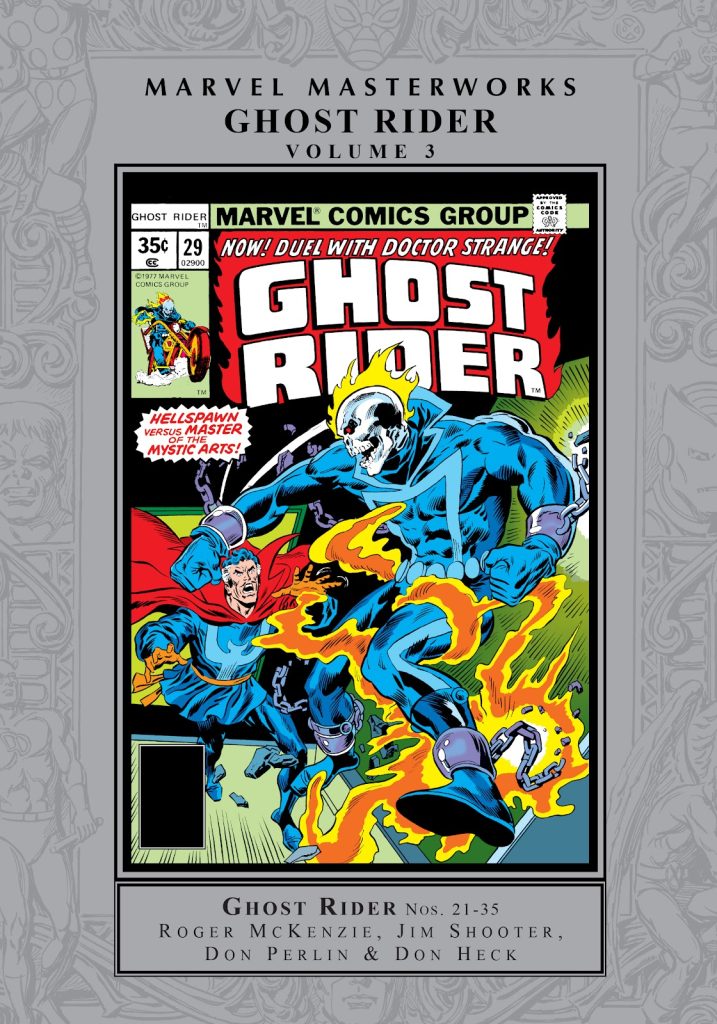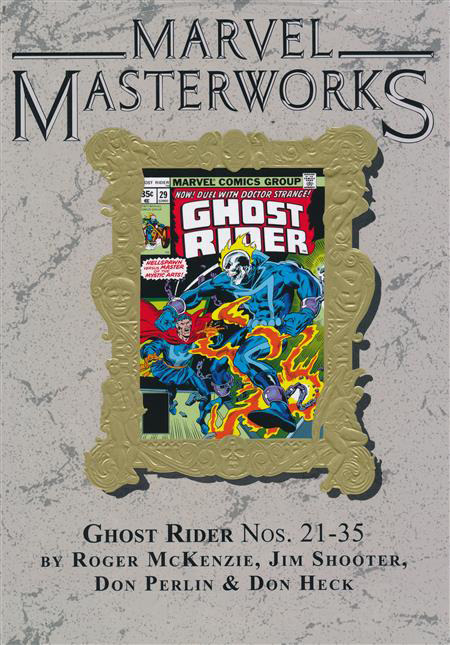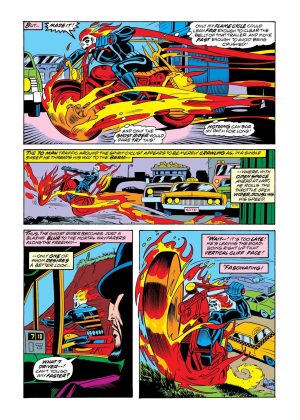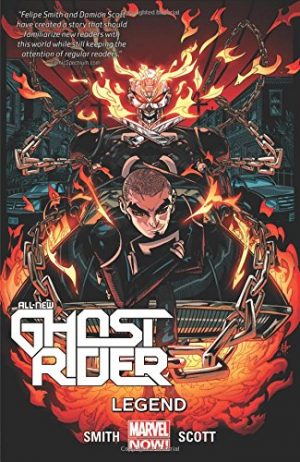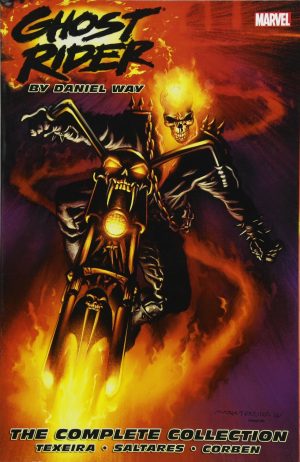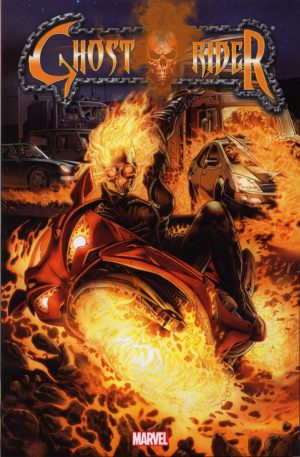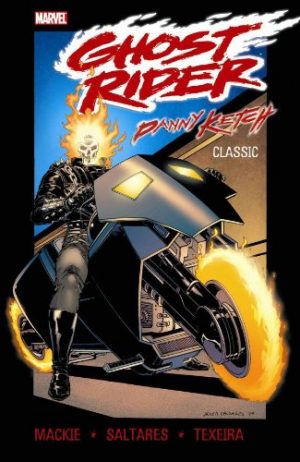Review by Ian Keogh
In case you’re keeping count, adding the writers credited in Ghost Rider Masterworks Volume 3 brings the total to a dozen over three volumes, with that total of pencil artists already reached by the end of Volume 2, and a further five added here. It goes a long way to explaining the consistent mediocrity, yet that never seems to have impacted sales in the 1970s, and the Ghost Rider’s first supernatural ride lasted over ten years.
The best art is provided by Gil Kane on Ghost Rider’s encounter with Daredevil’s old foe Gladiator representing Gerry Conway’s preference for pitting the spirit of vengeance against Marvel’s minor supervillains. Unfortunately, though, artistic treats aren’t high on the agenda. Under Don Heck Ghost Rider looks best when inked by Don Newton, but generally it’s Heck’s usual contrast of polished conversation scenes and stiff action. The most frequent penciller is Don Perlin, and the sample art is about as dynamic as it gets. His Ghost Rider generally lacks power or presence.
Jim Shooter and Roger McKenzie write half a dozen issues apiece, Perlin co-plotting McKenzie’s efforts. Shooter’s not very inspired in any respect, unable to transfer the excitement of his superhero work. McKenzie and Perlin together have some better ideas, such as involving Doctor Strange in attempting to break Ghost Rider’s curse, but they drag matters on too long.
Jim Starlin may only have ever produced the single Ghost Rider story, but the final inclusion here is the best by some massive distance. Starlin’s other Marvel work personifies Death as an alluring woman, but this version is a fellow skeleton enclosed in cycle leathers who challenges Johnny Blaze first to a five mile race to save a life, then to a longer ride. Johnny knows the odds are stacked, but is given little choice. Starlin’s layouts for the main event are pencilled by Steve Leialoha, with Al Milgrom handling the framing sequence, and the result is starry darkness over empty landscapes and shadowy canyons. It’s not a masterpiece, but at least it’s coherent and atmospheric, which applies to very little else here.
The same stories are also provided in black and white in the second Essential Ghost Rider.
